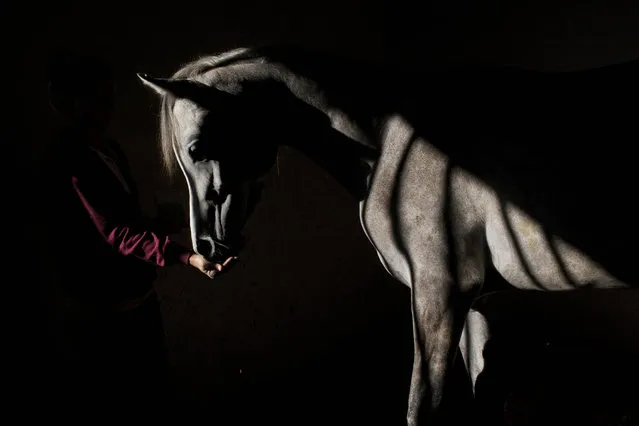
In this Monday, December 7, 2015 photo, a veterinary technician feeds a horse at the Hebrew University's Koret School of Veterinary Medicine in Rishon Lezion, Israel. Veterinarians at the hospital operate on about two dozen horses a month and rely on elaborate tools and an army of volunteers to safely treat animals that can weigh more than 1,000 pounds (450 kilograms). (Photo by Oded Balilty/AP Photo)
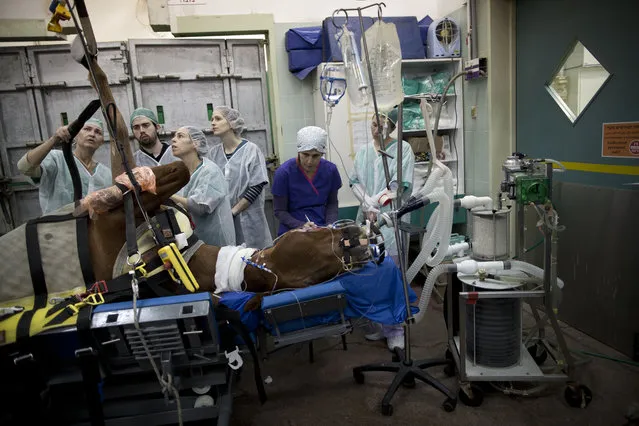
In this Wednesday, December 2, 2015 photo, veterinarians and students prepare a horse with a broken leg for a surgery at the Hebrew University's Koret School of Veterinary Medicine in Rishon Lezion, Israel. Veterinarians at the hospital operate on about two dozen horses a month, most of them pleasure and show horses. To prepare a horse for surgery, anesthesiologists slip an infusion into the animal's jugular vein, which is harder to dislodge than an IV in the leg. (Photo by Oded Balilty/AP Photo)
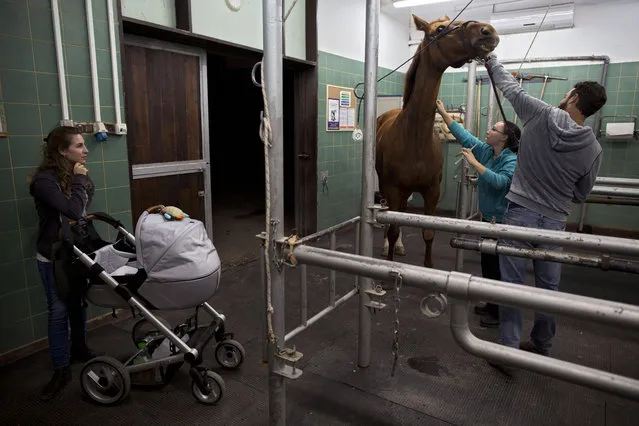
In this Wednesday, November 18, 2015 photo, a veterinarian examines a horse with a leg wound at the Hebrew University's Koret School of Veterinary Medicine in Rishon Lezion, Israel. (Photo by Oded Balilty/AP Photo)
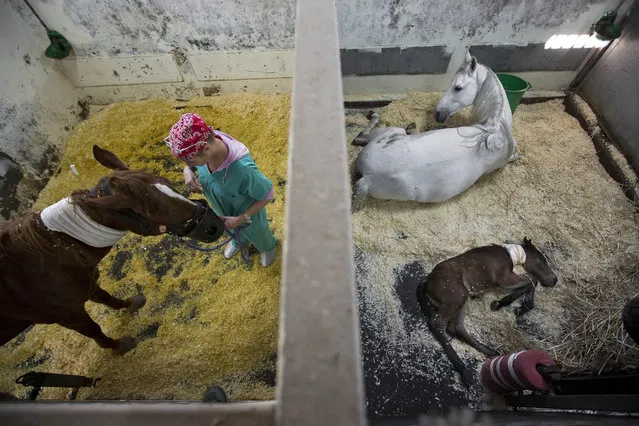
In this Thursday, December 10, 2015 photo, a horse and her one day old foal rest in their recovery zone, as other horse receive treatment at the Hebrew University's Koret School of Veterinary Medicine in Rishon Lezion, Israel. (Photo by Oded Balilty/AP Photo)
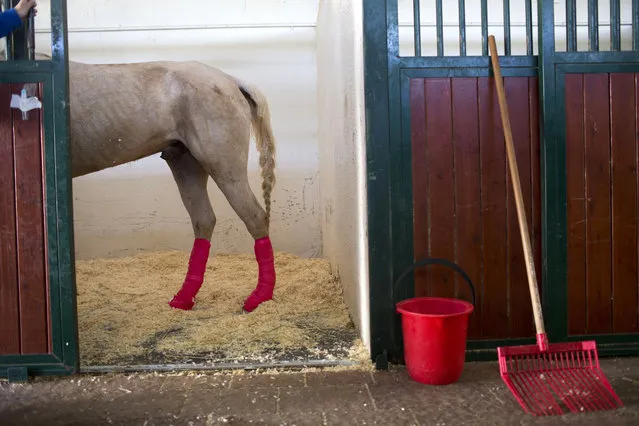
In this Sunday, December 6, 2015 photo, a horse stands in a stall after leg surgery at the Hebrew University's Koret School of Veterinary Medicine in Rishon Lezion, Israel. (Photo by Oded Balilty/AP Photo)
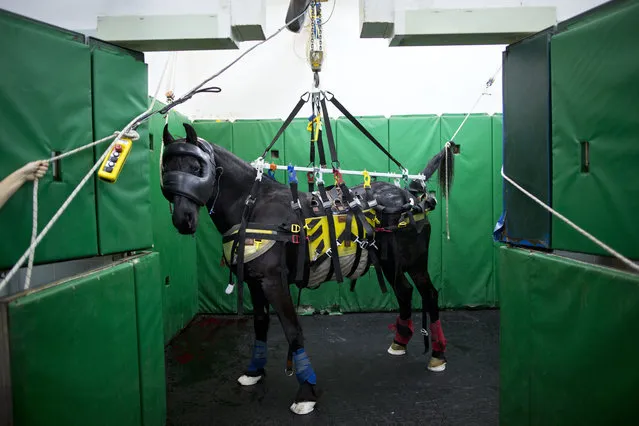
In this Saturday, November 28, 2015 photo, a horse is supported in a recovery room after a surgery at the Hebrew University's Koret School of Veterinary Medicine in Rishon Lezion, Israel. To restrain a flighty horse, Dr. Gal Kelmer, who heads the large animal department, straps the animal into a sling that suspends it from the belly and lifts it into the air, keeping the mouth closed and tail tied as the horse gradually regains control of its body. (Photo by Oded Balilty/AP Photo)
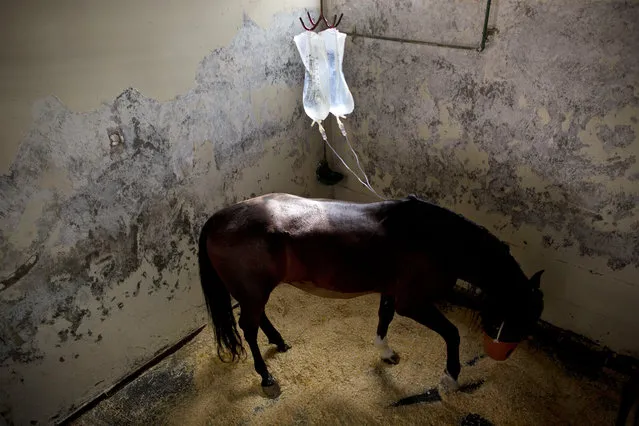
In this Monday, November 23, 2015 photo, a horse receives medication in his recovery stall after a surgery at the Hebrew University's Koret School of Veterinary Medicine in Rishon Lezion, Israel. (Photo by Oded Balilty/AP Photo)
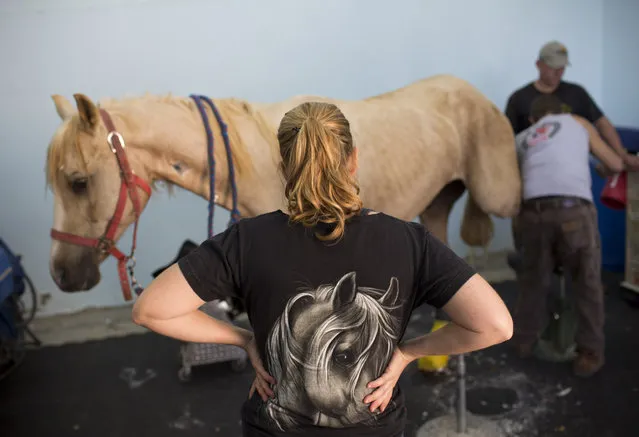
In this Saturday, November 28, 2015 photo, veterinarians examine a horse after his surgery at the Hebrew University's Koret School of Veterinary Medicine in Rishon Lezion, Israel. (Photo by Oded Balilty/AP Photo)
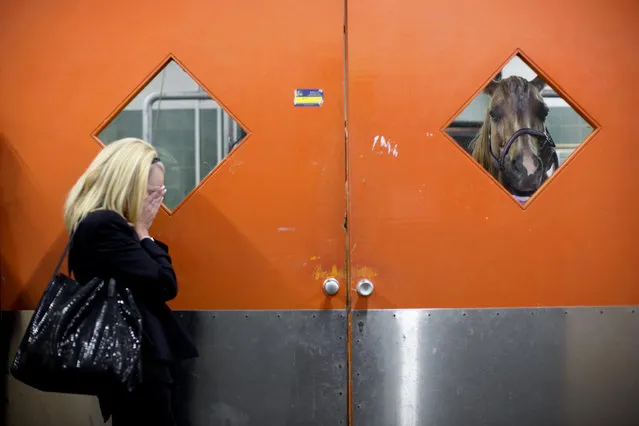
In this Wednesday, November 25, 2015 photo, a horse owner waits outside the clinic as veterinarians examine her horse at the Hebrew University's Koret School of Veterinary Medicine in Rishon Lezion, Israel. Veterinarians at the hospital operate on about two dozen horses a month, most of them pleasure and show horses. (Photo by Oded Balilty/AP Photo)
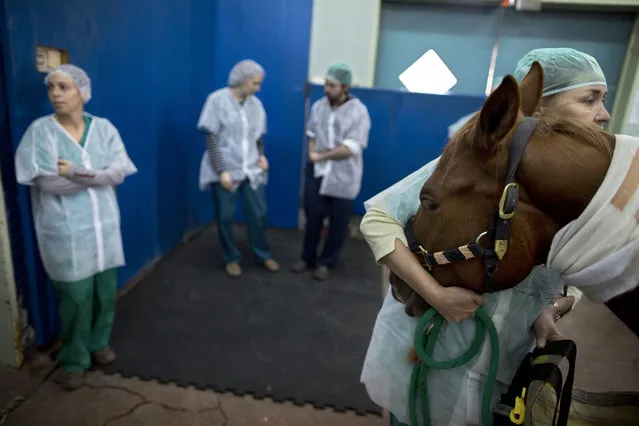
In this Wednesday, December 2, 2015 photo, a veterinarian holds a horse as he is anesthetized before a surgery at the University's Koret School of Veterinary Medicine in Rishon Lezion, Israel. (Photo by Oded Balilty/AP Photo)
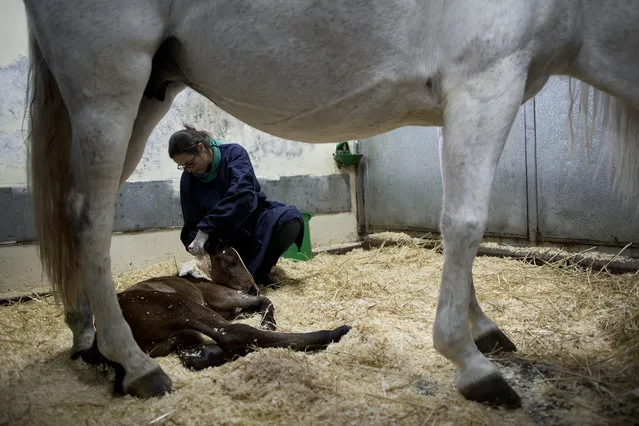
In this Thursday, December 10, 2015 photo, a veterinary doctor treats a horse and her one day old foal as they rest in their recovery zone at the Hebrew University's Koret School of Veterinary Medicine in Rishon Lezion, Israel. (Photo by Oded Balilty/AP Photo)
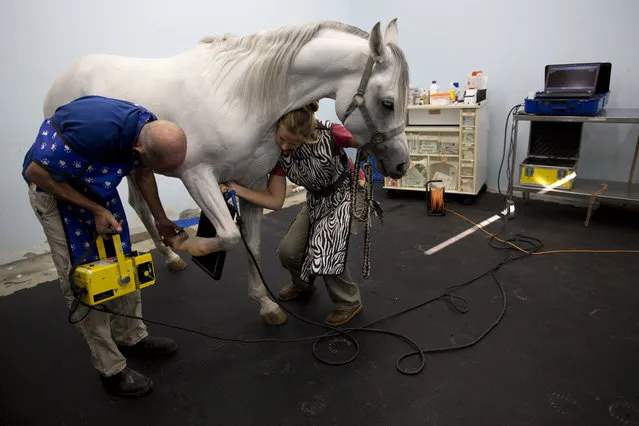
In this Monday, November 23, 2015 photo, Dr. Gal Kelmer, head of the department of large animals, left, and a veterinarian technician prepare a horse for an X-ray demonstration at the Hebrew University's Koret School of Veterinary Medicine in Rishon Lezion, Israel. The most common medical problem is colic, Kelmer said, a digestive ailment that usually requires hoisting the horse upside down to examine the abdomen. Other issues include trauma, leg fractures and breathing problems. (Photo by Oded Balilty/AP Photo)
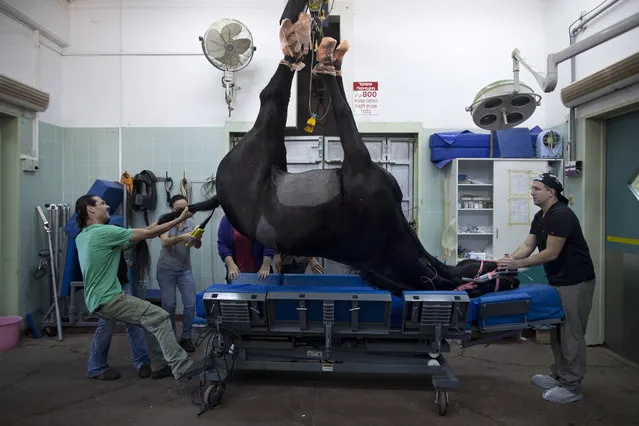
In this Saturday, November 28, 2015 photo, a horse is hoisted onto an equine operating table ahead of a surgery at the Hebrew University's Koret School of Veterinary Medicine in Rishon Lezion, Israel. Horses are prone to galloping off the operating table as soon as anesthesia wears off, requiring veterinarians to rely on elaborate tools and an army of volunteers to safely treat animals that can weigh more than 1,000 pounds (450 kilograms). (Photo by Oded Balilty/AP Photo)
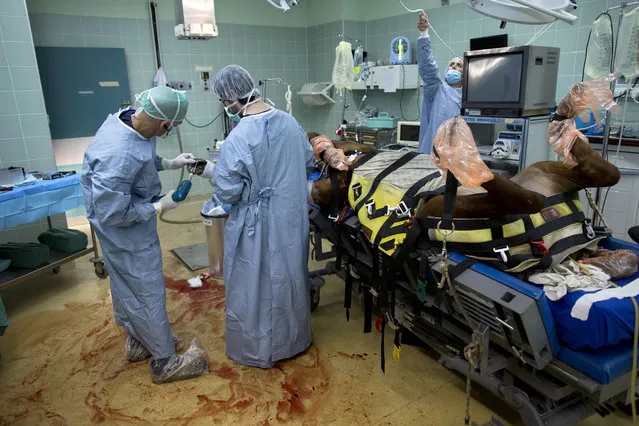
In this Wednesday, December 2, 2015 photo, veterinarians and students operate on a horse with a broken leg at the Hebrew University's Koret School of Veterinary Medicine in Rishon Lezion, Israel. “They are not good patients”, said Dr. Gal Kelmer, who heads the large animal department. “I get a lot of satisfaction when things work”. (Photo by Oded Balilty/AP Photo)
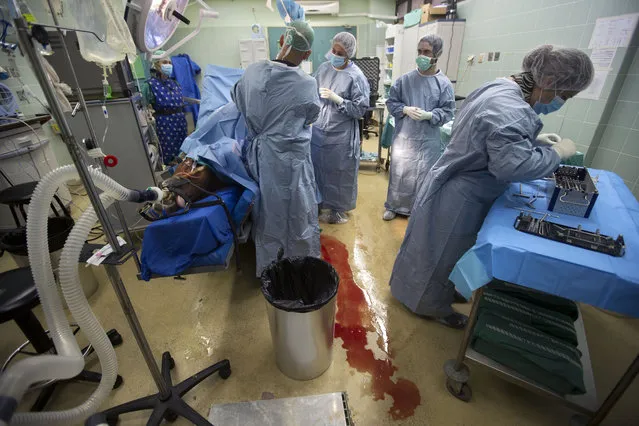
In this Wednesday, December 2, 2015 photo, veterinarians and students operate on a horse with a broken leg at the University's Koret School of Veterinary Medicine in Rishon Lezion, Israel. (Photo by Oded Balilty/AP Photo)
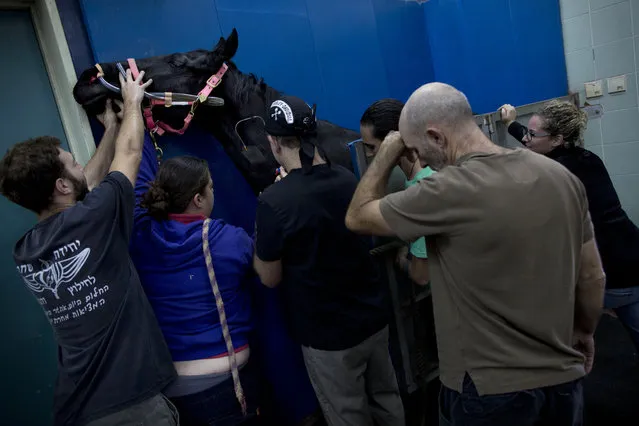
In this Saturday, Nov. 28, 2015 photo, veterinarians and students hold a horse as he is being anesthetized before a surgery at the Hebrew University's Koret School of Veterinary Medicine in Rishon Lezion, Israel. To prepare a horse for surgery, anesthesiologists slip an infusion into the animal's jugular vein, which is harder to dislodge than an IV in the leg. (Photo by Oded Balilty/AP Photo)
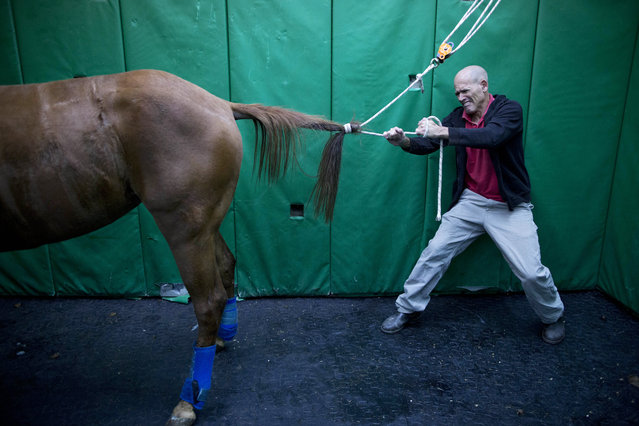
In this Wednesday, December 2, 2015 photo, Dr. Gal Kelmer, head of the department of large animals, unties a horse after its operation at the University's Koret School of Veterinary Medicine in Rishon Lezion, Israel. “Horses have an instinctive response of flight from danger”, Kelmer said. “The minute they wake up they start trying to stand and run, even if they don't have control of their limbs. So then they fall”. (Photo by Oded Balilty/AP Photo)
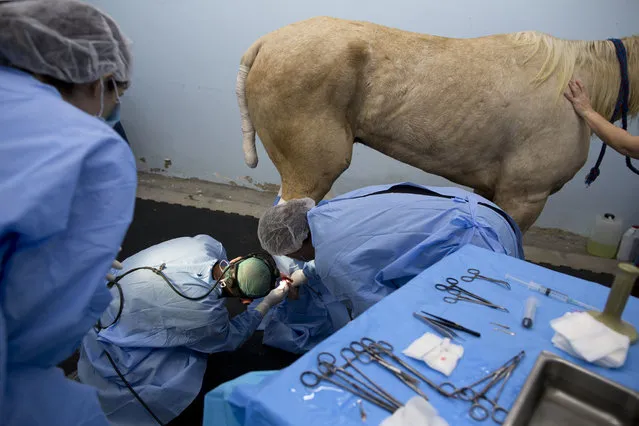
In this Sunday, November 29, 2015 photo, veterinarians operate on a horse with leg wounds at the Hebrew University's Koret School of Veterinary Medicine in Rishon Lezion, Israel. (Photo by Oded Balilty/AP Photo)
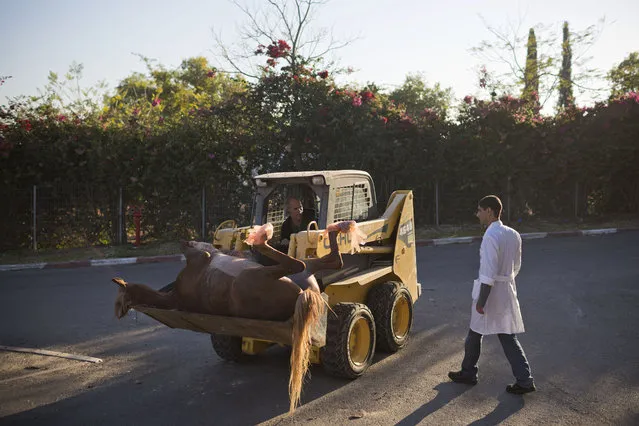
In this Thursday, December 10, 2015 photo, Dr. Gal Kelmer, head of the department of large animals, transports a dead horse at the Hebrew University's Koret School of Veterinary Medicine in Rishon Lezion, Israel. “Some people ask me, “What, you do only horses?” But for surgeons it's very broad”, Kelmer said. “Today I treated an eye, and a horse with an injured distal limb, and a rectum. For a human, not in a lifetime would a surgeon do these three things”. (Photo by Oded Balilty/AP Photo)
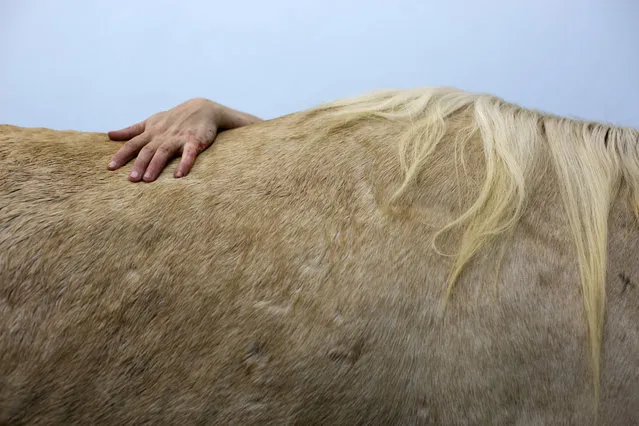
In this Sunday, November 29, 2015 photo, a veterinarian holds a horse during a leg surgery at the Hebrew University's Koret School of Veterinary Medicine in Rishon Lezion, Israel. (Photo by Oded Balilty/AP Photo)
15 Dec 2015 08:04:00,
post received
0 comments
